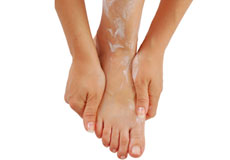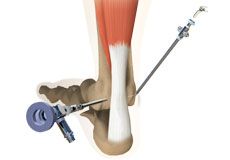
Ankle Arthroscopy
Ankle arthroscopy is a minimally invasive surgical procedure in which an arthroscope, a small, soft, flexible tube with a light and video camera at the end, is inserted into the ankle joint to evaluate and treat a variety of conditions.
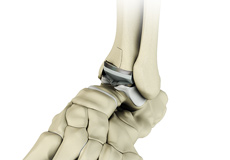
Ankle Joint Replacement
Ankle joint replacement, also known as total ankle arthroplasty, is a surgical procedure performed to relieve pain and immobility due to severe end-stage arthritis that has not responded to non-surgical treatments.
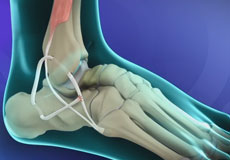
Ankle Ligament Reconstruction
A sprain is the stretching or tearing of a ligament. Ligaments connect adjacent bones in a joint and provide stability to the joint.
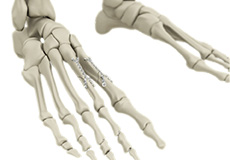
Foot Reconstruction
Foot reconstruction is a surgery performed to correct the structures of the foot and restore the natural functionality of the foot that has been lost due to injury or illness.
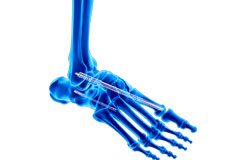
Charcot Foot Reconstruction
Charcot foot reconstruction is a surgery performed to repair damage to the bones, ligaments, tendons and other structures in a foot affected by a condition called Charcot foot, which is characterized by loss of sensation in the foot.
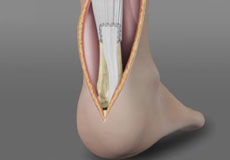
Achilles Tendon Repair
The Achilles tendon is often injured during sports activities, resulting in an inflammatory condition called tendonitis, which is characterized by swelling and pain.
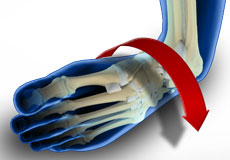
Ankle Instability Surgery
Ankle instability is a chronic condition characterized by the recurrent slipping of the outer side of the ankle. Instability is generally noticed during movement of the ankle joint, but can also occur while standing.
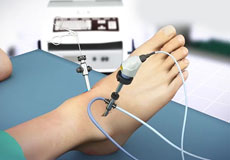
Minimally Invasive Foot Surgery
Minimally invasive foot surgery (MIFS) uses the latest advanced technology to treat foot and ankle pain caused by a variety of conditions.
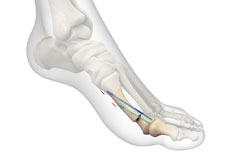
Minimally Invasive Bunion Surgery
Minimally invasive bunion surgery, also known as keyhole bunion surgery, is a procedure to treat a foot condition called a bunion or hallux valgus.
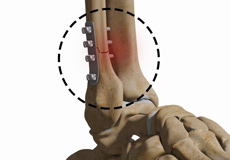
Complex Foot and Ankle Surgeries
Complex foot and ankle surgeries are procedures employed to treat foot and ankle structures with deformities, injuries, structural issues, and damage from diseases like diabetes or arthritis.
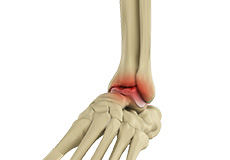
Foot and Ankle Arthritis
Arthritis is the inflammation of joints as a result of degeneration of the smooth cartilage that lines the ends of bones in a joint.
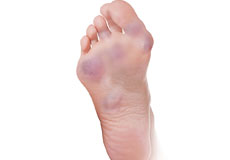
Foot Rheumatoid Arthritis
Arthritis is inflammation in the joint resulting from the degeneration of cartilage causing joint pain, swelling, and stiffness resulting in restricted movements.
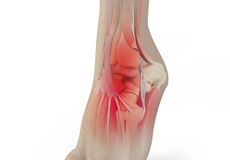


Plantar Fasciitis
Plantar fasciitis refers to the inflammation of the plantar fascia, a thick band of tissue that is present at the bottom of the foot. It runs from the heel bone to the toes and forms the arch of your foot.
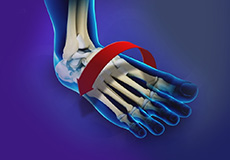
Ankle Instability
The joints of the ankle are held in place and stabilized by strong bands of tissue called ligaments. Ankle instability is a chronic condition characterized by a recurrent slipping of the outer side of the ankle.
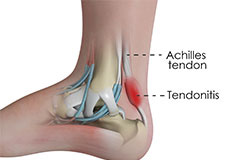
Achilles Tendinitis
The Achilles tendon is a tough band of fibrous tissue that runs down the back of your lower leg and connects your calf muscle to your heel bone. The tendon is used when you walk, climb, jump, run and stand on your tip toes.

Ankle Sprain
A sprain is the stretching or tearing of ligaments. Ligaments connect adjacent bones and provide stability to a joint. An ankle sprain is a common injury that occurs when you suddenly fall or twist the ankle joint, or when you land your foot in an awkward position after a jump.
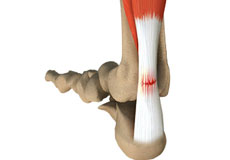
Achilles Tendon Rupture
The Achilles tendon is a strong fibrous cord present behind the ankle that connects the calf muscles to the heel bone. It is used when you walk, run and jump.
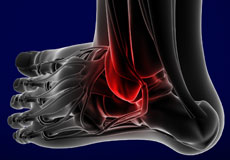
Foot and Ankle Trauma
Foot and ankle trauma refers to injuries that most commonly occur during sports, exercise or any other physical activity. Trauma may be a result of accidents, poor training practices or use of improper gear.
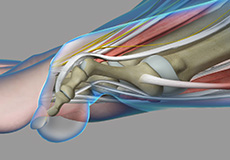
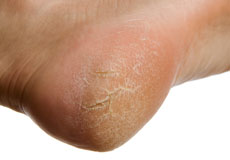
Heel Cracks
Heel cracks or fissures are the splitting or cracking of the skin on the outer edge of the heel due to excessive drying and pressure that causes the skin to expand sideways. In some people, thick, hard layers of the skin (calluses) can cause flakes and deep cracks.
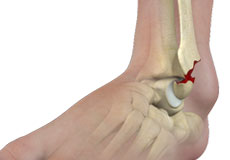
Ankle Fractures
Ankle injuries are very common in athletes and individuals performing physical work; often resulting in severe pain and impaired mobility.
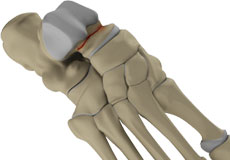
Talus Fractures
The talus is a small bone at the ankle joint that connects the heel bone and the shinbones, enabling up and down movement of the foot.
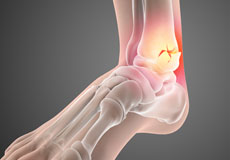
Foot Fracture
Trauma and repeated stress can cause fractures in the foot. Extreme force is required to fracture the bones in the hindfoot.
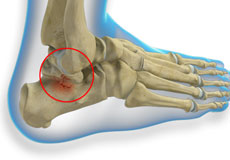
Heel Fractures
The calcaneus or heel bone is a large bone found at the rear of the foot. A heel fracture is a break in the heel bone due to trauma or various disease conditions.
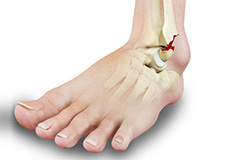
Stress Fractures of Foot and Ankle
A stress fracture is described as a small crack in the bone which occurs from an overuse injury of a bone. It commonly develops in the weight-bearing bones of the lower leg and foot.
What is the Normal Anatomy of the Foot and Ankle?
The foot and ankle form complex joints that are involved in movement and providing stability and balance to the body. The foot and ankle consist of 26 bones, 33 joints, and many muscles, tendons, and ligaments.
Bones of the Ankle
The ankle joint connects the leg with the foot and is composed of three bones: the tibia, fibula, and talus. The tibia or shinbone and fibula or calf bone are bones of the lower leg, which articulate with the talus or ankle bone, enabling up and down movement of the foot.
Three bony bumps present on the ends of the tibia and fibula form parts of the ankle joint:
- The medial malleolus, formed by the tibia, is found on the inside of the ankle.
- The posterior malleolus, also formed by the tibia, is found at the back of the ankle.
- The lateral malleolus, formed by the fibula, is found on the outer aspect of the ankle.
Bones of the Feet
The foot acts as a single functional unit, but can be divided into three parts: the hindfoot, midfoot and forefoot.
The hindfoot forms the ankle and heel, and is made up of the talus bone and calcaneus or heel bone. The heel bone is the largest bone in the foot.
The midfoot connects the hindfoot to the forefoot, and consists of one navicular bone, one cuboid bone, and three cuneiform bones. The navicular bone is found in front of the heel bone, and the cuneiform and cuboid bones are arranged in front of the navicular bone.
These bones are connected to five metatarsal bones of the forefoot that form the arch of the foot for shock absorption while walking or running. The forefoot is also made up of the toes or digits, formed by bones called phalanges - three in each toe, except the big toe, which has only two phalanges. The big toe has two additional tiny round sesamoid bones in the ball of the foot, which helps in upward and downward movements of the toe.
Ankle and Foot Joints
There are 33 joints in the ankle and foot. They include:
- Hinge joints in the ankle, which allow flexion (bending) and extension
- Gliding joints found in the hindfoot, which allow gliding movements
- Condyloid joints found in the forefoot and toes, which allow the flexion (bending) and extension, adduction, and abduction (sideward movement).
The joints of the foot and ankle provide stability and support the weight of your body, helping you to walk or run, and adapt to uneven grounds.
Soft Tissues of the Ankle and Foot
Our feet and ankle bones are held in place and supported by various soft tissues such as cartilage, ligaments, muscles, tendons, and bursae.
The joint surface of all the bones of the ankle and foot are lined by a thin, tough, flexible, and slippery surface called the articular cartilage, which acts as a shock absorber and cushion to reduce friction between the bones. The cartilage is lubricated by synovial fluid, which further enables smooth movement of the bones.
Ligaments are tough rope-like tissue that connect bones to other bones, and hold them in place, providing stability to the joints. The plantar fascia is the largest ligament in the foot, originating from the heel bone to the forefoot, it extends along the lower side of the foot and is involved in maintaining the arch of the foot. The plantar fascia ligament stretches and contracts to provide balance and strength to the foot. Lateral ligaments on the outside of the foot and medial ligaments on the inside of the foot provide stability and allow up and down movement of the foot.
The foot is made up of 20 muscles that help in movement. The main muscles include:
- Anterior tibial muscle, which allows up and down movement of the foot
- Posterior tibial muscle, which supports the arch
- Peroneal tibial muscle, which controls movement on the outside of the ankle
- Extensors, which enable the ankle to raise the toes just before stepping forward
- Flexors, which stabilize the toes against the floor
- Smaller muscles that help the toes to lift and curl
Tendons are soft tissues that connect muscles to bones. The largest and strongest tendon in the foot is the Achilles tendon, present at the back of the lower leg around the heel bone. Other tendons include peroneal and anterior and posterior tibialis.
Bursae are small fluid-filled sacs that decrease friction between tendons and bone or skin. They contain special cells called synovial cells that secrete a lubricating fluid.

